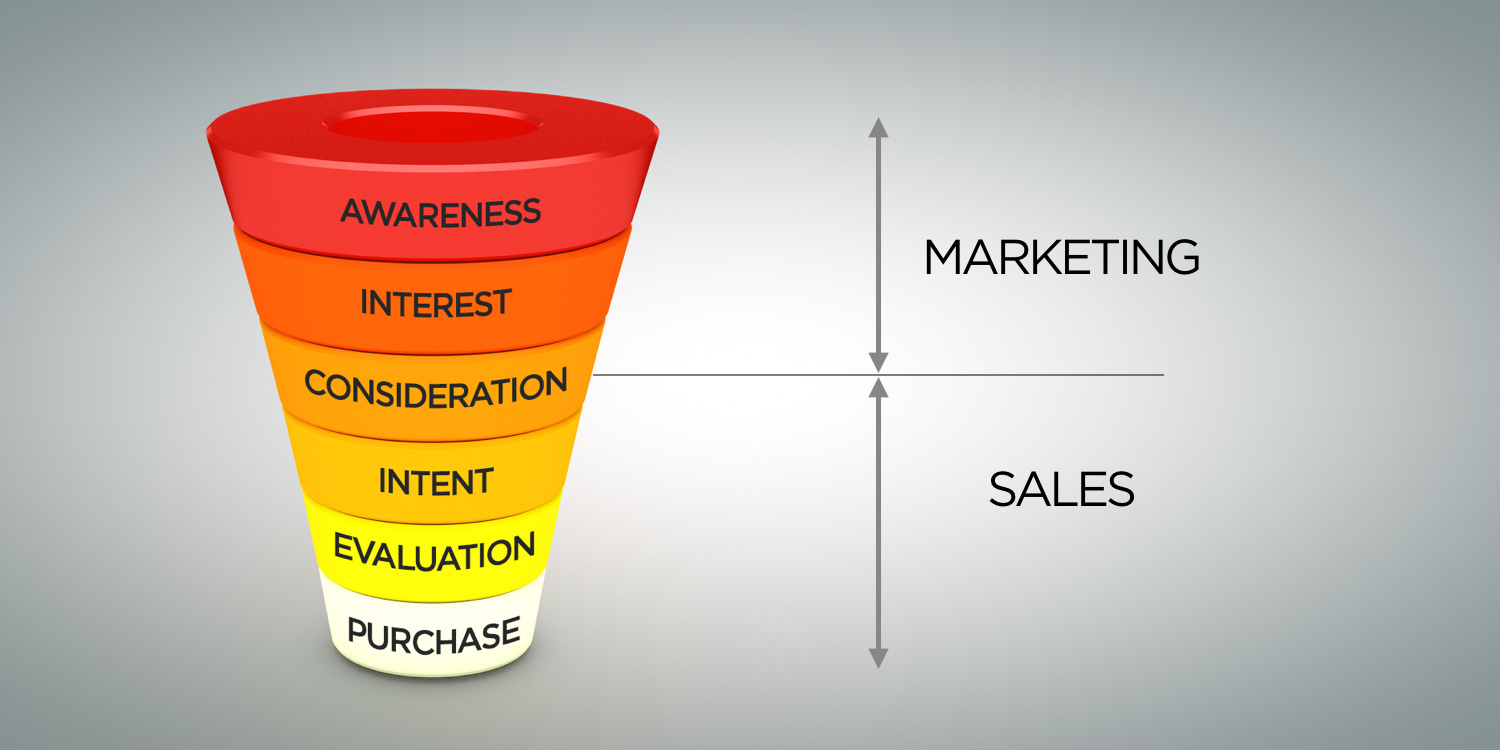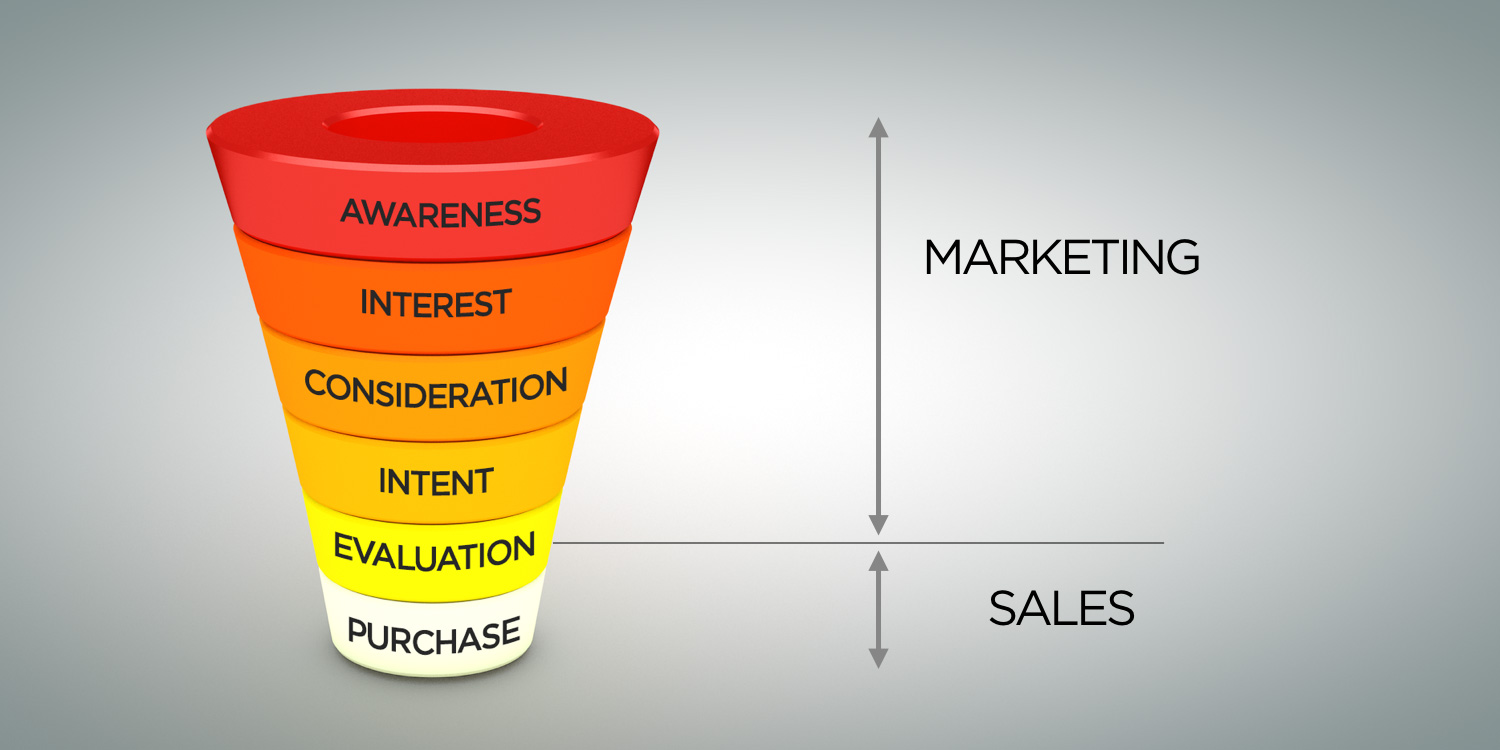
Traditionally, the relationship between sales and marketing has been one of endurance rather than acceptance. Sales thinks they could do better marketing, and vice-versa. Each department believes they could do a superior job to what’s being done today.
On one side of the fence are the marketers. They believe they do most of the grunt work by generating, qualifying, and nurturing leads. Once the ‘suspect’ becomes a ‘prospect’ and has entered into the buying phase, marketing hands them over to sales – who simply takes the order (probably after giving a discount) and pockets a commission.
Salespeople, in contrast, think marketers are too remote from ‘real’ customers to understand the blood, sweat, and tears involved in closing a deal. Sales believe marketers have never had tangible face-to-face selling experience, so don’t understand or appreciate what’s involved to get a customer to sign on the dotted line.
The Evolution Of The Sales/Marketing Relationship
A combination of technology and its influence on buyer behavior has had the effect of moving the goalposts of where marketing stops and sales begins. Many companies had a customer acquisition funnel with the delineation of sales and marketing responsibilities looking a lot like this:

Marketing’s job was to identify prime customer segments and develop resonating brand and value propositions. To create and circulate materials, collateral, and messaging across relevant channels. The role may have even included organizing appointments for the sales team. Once that point was reached, the customer relationship was surrendered to sales, who became wholly responsible for making the deal happen.
Has Marketing Become The New Sales?
Then one day, businesses realized how expensive it was to run their sales processes like this. With all the investment in back-office work, it could take years for new customers to become profitable. Business owners and sales directors started talking about things like Customer Retention and Customer Lifetime Value. Organizations realized it was much cheaper to sell to an existing customer than to a new one. That meant ensuring customers stayed happy with their purchase, loyal to the brand – and less likely to take their money to the competition.
Around the same time, organizations started redefining sales processes as being either from either a Business To Business (B2B) or Business To Consumer (B2C) position. Since B2B often had larger numbers at the bottom of the order form, salespeople claimed ownership of it. They bought nicer suits, changed the title on their business cards, and become account managers. B2C, on the other hand, became perceived as being too costly for human beings to do. B2C sales reps were (and continue to be) replaced by marketing automation technology, driven by complex and powerful CRM software.
Today, the rapid evolution of customer behavior in its adoption of technology to make faster and more informed buying decisions have changed the traditional delineation between sales and marketing. Not only that, but technology previously deployed within a B2C space is increasingly being used in B2B. Having a person turn up at your office (regardless of what their new title is) to tell you about their company’s product or service and get you to buy it, can seem archaic. Customers know as much – if not more – about your product than you do. They do their own research, form their own buying conclusions, even arranging a demo or trial. They can order online, pay online, and track their delivery – without ever clapping eyes on a salesperson or picking up the phone.
Since the analytics, monitoring, and CRM systems used to manage this new customer relationship process are invariably driven by marketing departments, does that mean that marketing has become the new sales?
The Death Of Sales Has Been Wildly Exaggerated
Not at all. The role of sales hasn’t disappeared. It’s evolved.
The role of sales is migrating from persuading/cajoling/intimidating customers, to an advisory/consultative position of recommending the most appropriate solution for the customer. It’s less about “my widget is better than the one from the guy down the street”, to helping the customer understand the wider causes and implications of the problem they are aiming to solve. It’s about being – and being seen – as far more than ‘just another supplier’. It’s being considered as a trusted peer, representing a business the customer considers credible and reputable.
If marketing continues to head down the tech-based road of “Big Data” this, and “statistical analysis” that, surely there’s an important role to be filled in providing objective, customer-relevant advice and information to aid in the decision-making process. Such a role would also play an important part in an organization’s customer retention efforts. Win-win.
Perhaps the new customer acquisition funnel looks more like this:

Don’t get me wrong. I’m not (totally) belittling data-driven, Big-Data focussed marketing initiatives – as long as the application of the insights mined from such information is used intelligently to enhance the customer experience. Martech can mean the difference in delivering a relevant and timely piece of information that is actually read, rather than a piece of spam that is deleted. It can provide quasi-realtime information on the customer journey, online influences, programmatic advertising, and so on.
However, sometimes all a prospect wants is someone who understands their problem and can help them make the right decision. They don’t want – or need – a branded microsite, geo-located Snapchat filter, or VR experience. At the end of the day, buyers are human beings. Sometimes we just want reassurance that we’re making the right decision, and not buying a lemon.
Two Halves Of The Whole
As marketing continues its shift towards making sense of data and providing more useful buying decision criteria, perhaps the next iteration of the salesperson’s role is as much with customer engagement, retention, and loyalty building. Perhaps sales performance in the (near) future will be less about targets and quotas, and more about customer relationship quality measurement indicators such as how happy a customer feels after their purchase, their likelihood to repurchase, or how willing they are to recommend the product/service/brand to their friends or peers.
While marketing technology can have the effect of making messaging more timely and individual, it can at the same time make communication more impersonal. Perhaps the new role of sales is to re-inject that tactile, human, element into the transaction; even as the acquisition process itself becomes more automated.
Recent articles:
Dark Social: The Hidden Conversations Marketers Can’t See

Marketing In A Recession: How To Weather The Storm

How To Convince A Marketing Skeptic

Privacy Protection: Why Ad Tracking Must End

Marketing Isn’t About Being Brave: It’s About Being Effective

Why Seeking Consensus Prevents Business Innovation

